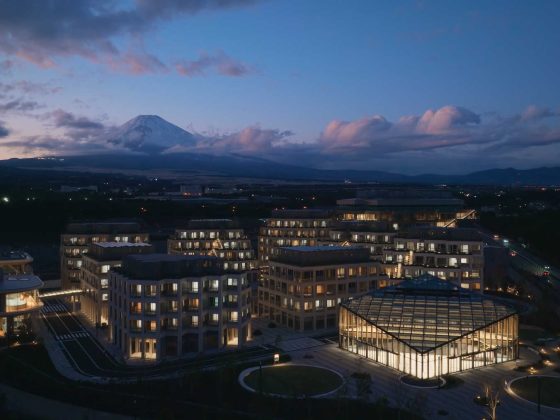It is a perfect time for Asean to build a string of smart metropolises in the region through stronger public-private sector linkages, and to raise its status as a global economic bloc.
Charles Dickens described the social conditions at the dawn of the first Industrial Revolution in A Tale of Two Cities as both the best and worst of times. It was a time of changes in economic production, wealth and labour distribution, but also the proliferation of urban slums due to unchecked pollution from factories and a lack of sanitation as half of Britain’s population flocked to the cities.
Fast forward two centuries and we are facing an even more breakneck pace of urbanisation, with two-thirds of the world’s population expected to live in urban settings by 2050. The difference is that the world today is in the midst of the fourth Industrial Revolution or Industry 4.0 – one characterised by the Internet of Things (IoT) and a Cambrian proliferation of connected smart devices and systems, capable of transforming cities into new centres of economic growth.
The World Bank had projected that the world’s top 600 cities will account for 60 per cent of the global economy by 2025. Within Asean, nearly 40 per cent of GDP growth will be driven by 142 cities with populations between 200,000 and five million.
Already, 26 pilot projects have been earmarked under the Asean Smart Cities Network (ASCN) spearheaded by Singapore under the Asean chairmanship last year. The aim of the network is to develop a framework for smart cities by forging better linkages between public and private sectors.
It brings together, for a start, more than 100 private-sector solutions providers, backed by funding from financial institutions such as the World Bank, Asian Development Bank (ADB) and Asian Infrastructure Investment Bank (AIIB).
Essentially, the premise is for regional governments to take the lead in putting in place infrastructural frameworks and policies to tackle pressing issues such as traffic congestion, management of water resources, physical and cyber security; this leaves the private sector, which has a better feel for technology, market and consumer trends, to be the enabler of urban solutions.
Citing examples of companies such as Grab and Gojek, Minister for Trade and Industry Chan Chun Sing recently noted at the Asean conference of the Singapore Business Federation (SBF) that “Asean needs to come together to seize new opportunities offered by the digital space, with the cross-border flow of data allowing firms to create new products and services as well as work on common platforms”.
Prime Minister Lee Hsien Loong reiterated at the 34th Asean Summit that the regional grouping, as an economic bloc, should continue to streamline regulations and enhance connectivity in order to advance its collective interest in trade, technology and security.
COLLABORATIVE PPP APPROACH
Given the swathe of both upcoming and existing legacy infrastructural terrain in the face of rapid influx of new denizens, it is often not easy for municipals to discern between symptoms and root causes, determine areas or issues to tackle or prioritise, assess the appropriate holistic solutions and to figure out the means to fund the array of projects.
The IoT age is often marked by the practice of running pilot projects that are iterative, modular and scalable in design, so as to accommodate larger ecosystems, as well as the need to lay out flexible procurement procedures among different agencies (local and regional) and cater to the different service solutions providers.
The traditional approach typically entails the issue of requests for proposals (RFPs) with engineering specifications, with the government or municipal body bearing most of the costs and financial risks. However, not many Asean cities may be able to shoulder the level of financial risks and responsibilities on their existing budgets.
In the past, for example, a city would likely have to parlay millions of dollars for an infrastructure-heavy traffic-management system to improve urban mobility.d responsibilities on their existing budgets.
But with the advent of smart technology, similar objectives can be achieved through more affordable technological solutions such as cloud-hosted, mobility-as-a-service (MaaS) platforms riding on interoperable, open public applications and delivered via IoT-enabled networks and smart phones.
Such solutions from both public and private operators would be able to integrate data and services from multiple sources such as bus, ride-sharing and rail operators. These can, at the same time, create other opportunities for real-time, retail and food-delivery services as well as other potentially monetised data streams for businesses.
Some alternative arrangements where private-public partnerships (PPP) can employ include:
- Design-Build-Operate-Transfer (DBOT) of assets to public agencies after the engineering, procurement and construction (EPC) risks are undertaken and mitigated by private companies.
- Design-Build-Own-Operate (DBOO) under an agreed concession for the next 20 to 25 years to recover cost of investment.
- Open Business Model (OBM), where private companies co-invest and co-create solutions with public agencies in the development of smart-city projects. Opportunities for companies would include digital government services, efficient energy use, water and waste management, transportation, education and healthcare services.
Examples of the DBOO and DBOT models would be that of waterworks including desalination plants and rail- and waste-management systems, where the government invests in the fixed infrastructure, while a consortium that builds the assets seeks to recover investment costs by leasing assets to the public agencies that act as the operators.
The new Punggol Digital District (PDD) in Singapore is an example of the open model. It is an expanded platform to encourage large local enterprises (LLEs), small and medium-sized enterprises (SMEs) and startups to participate in joint ventures or forged alliances to develop growth strategies in the digital economy. As the country’s first enterprise district, the PDD is one of the building blocks in our Smart Nation initiative to leverage technology to improve the lives of residents, enhance businesses and create job opportunities.
With Singapore as a test-bed and commercial launch pad for businesses, and given Singapore companies’ familiarity with the regional socio-economic and cultural landscape, they get a leg-up in their collaboration with Asean peers in developing smart cities.
Singapore firms are already involved with their Asean counterparts and municipals in ongoing projects. One example is New Clark City in the Philippines, where Surbana Jurong is working with the Bases Conversion and Development Authority (BCDA) on a Smart City blueprint that will include fully integrated infrastructure for power, water, sewerage, information and communication technology (ICT) and security and traffic management; Changi Airport International is a partner in a consortium that will oversee the operation and maintenance of the Clark International Airport.
ST Engineering, on its part, has deployed rail electronics solutions in 45 cities , including Asean cities such as Kuala Lumpur, Bangkok, Jakarta, Manila and Ho Chi Minh City. It is also an invited Smart City solutions provider in the government-initiated Asean Smart Cities network, scaling up along with our partners in Singapore.
Other Smart City projects where Singapore companies can lend their expertise or are already participating include smart street lighting and Wi-Fi networks in Davao City in the Philippines, Naypyitaw and Yangon in Myanmar; traffic management and operations in Hanoi in Vietnam and Makassar in Indonesia, and use of IoT sensors and drones to manage water and drainage issues in Mandalay in Myanmar.
Another area is the use of satellite communications (satcoms) in water and waste management by way of real-time collection of environmental data for management and planning purposes. Singapore’s capabilities in satcoms can create growth opportunities by driving solutions that are interoperable with terrestrial 5G networks, such as in autonomous vehicles where ultra-reliable and low-latency communications play a critical role due to the need for the vehicles to communicate instantly and continuously with each other as well as surrounding environments.
Urbanisation often means to millions of ordinary citizens better incomes and access to modern amenities, education and healthcare. For governments, it is the draw of sustainable investments and economic growth; for businesses, it means manpower resources and enhanced productivity.
According to the United Nations Conference on Trade and Development (UNCTAD), “a smart and sustainable city is one that deploys information and communication technologies (ICTs) and other means to improve the quality of life, efficiency of urban operation and services and competitiveness, ensuring that it meets the needs of present and future generations with respect to economic, social and environmental aspects”.
By tapping each other’s strengths and comparative advantages, and leveraging the critical mass market of more than 600 million people, Asean members can capitalise on the plentiful opportunities to realise this epochal transformation. It will also be an opportune time to elevate its standing as a rising economic bloc on the world stage.
By Vincent Chong | President and CEO of ST Engineering
Source: ST Engineering News Releases










